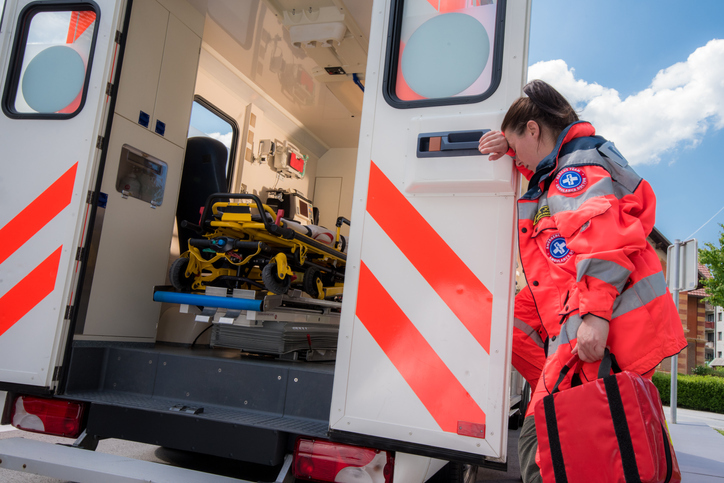First Responders Often Perceive Violence as Part of the Job
Not only do studies report that EMS professionals perceive violent attacks as part of the job, but many feel there is no need to report incidents if they did not sustain an injury. Risk managers have their work cut out for them.
May 24, 2021

Injury through assault remains a widely recognized but little acknowledged problem threatening emergency medical services (EMS) personnel. Many EMS workers admit to being attacked by a violent patient, an angry bystander or an upset family member.
“When risk managers with EMS workers on the payroll read through descriptions of their losses, they may find incidents of an employee struck on the head by a patient, an employee hit on the arm during a struggle, or an employee punched in the face by an intoxicated patient,” said Ariel Jenkins, Assistant Vice President – Risk Services. “The frequency of assault on our EMS providers is alarming and, while most attacks are not life-threatening, the risk of serious injury is evident and unpredictable.”
Authors of A Systematic Review of Workplace Violence Against Emergency Medical Services Responders reviewed hundreds of articles on the subject and found:
- Between 57 and 93 percent of EMS responders reported having experienced at least one act of verbal and/or physical violence during their career.
- Verbal abuse, physical assaults and intimidation were the most frequently reported types of violence.
- The most frequent source of physical violence was “struck by” attempts, followed by “punching, slapping, or scratching,” “spitting,” and “biting.”
- A study of 1,500 medical providers in New Mexico found that 56 percent of EMS survey respondents stated that violence is “just a part of the job.”
- In the same study, 40 percent believed that if no one was injured during the incident, then there was no need to report.
This data indicates EMS personnel require better education about this exposure and dedicated training on effective measures to control combative patient encounters. Developing that plan could include the following three steps.
1. Identify / Understand Risks Who better to help risk managers identify and understand issues than those regularly facing the risks in the field? Before you can develop a safety program, a good strategy is to involve EMS personnel to help identify a full spectrum of risk factors. One approach is to create a threat committee to help assess these potential threats for violence.
2. Prioritize Threats As threats are identified, the next step is to prioritize them. Start by plotting the threats on a grid, with one bar representing the likelihood of the exposure and the second representing the potential severity of the risk. The threats that have both high likelihood and high potential severity become your priorities. These priorities can assist in developing effective training and prevention programs to address the largest risks.
3. Determine Risk Control Measures Risk control measures can range from adding visible signage in vehicles stating “it is a felony to assault a first responder” to training EMS workers about de-escalation versus the use of self-defense or weapons. If this specialized training is not possible using internal expertise, then making the use of external expertise is worth the investment. After all, the end goal is to enhance the efforts of our EMS professionals to avoid injury and sustain a long, healthy career.

























